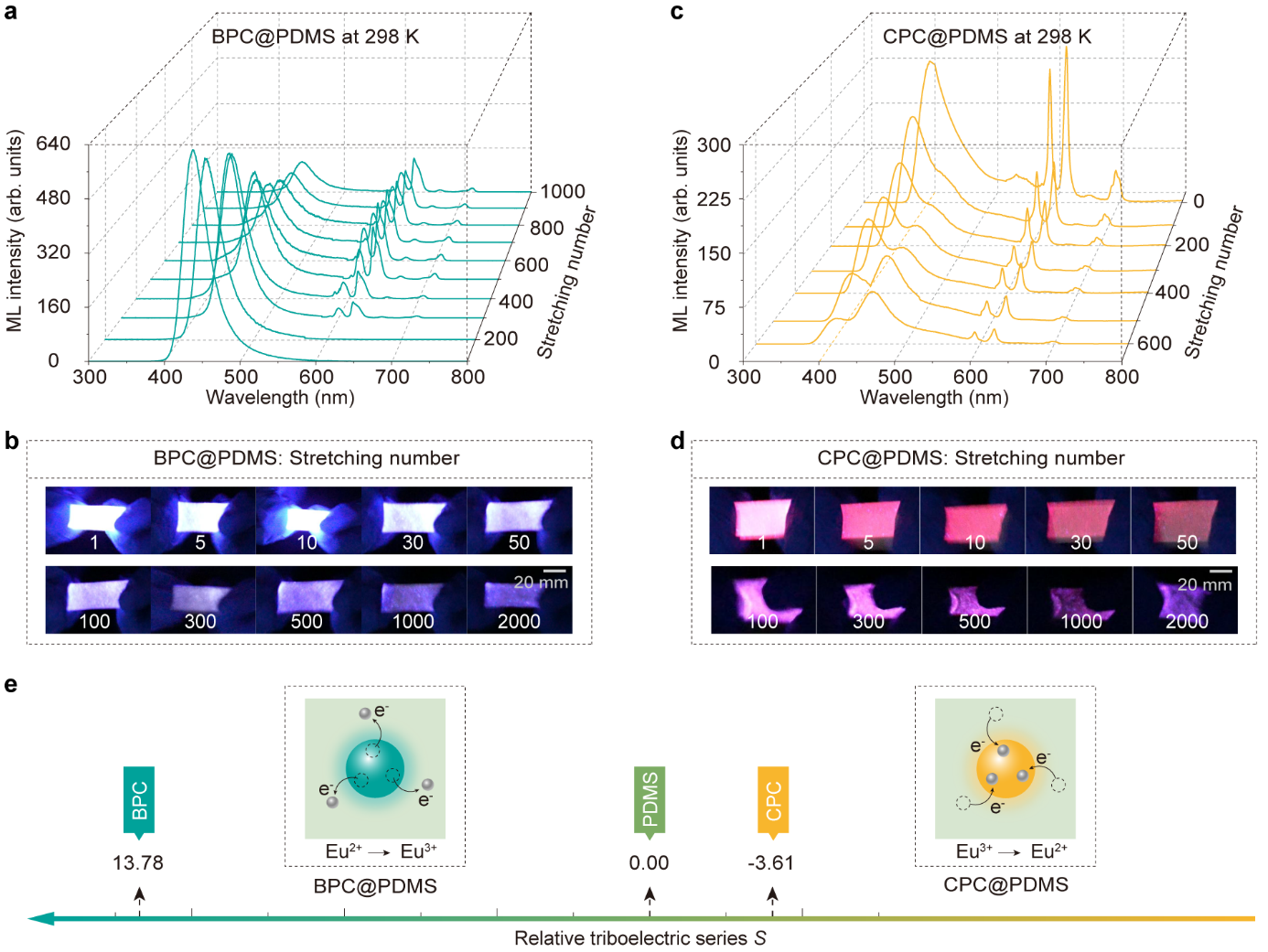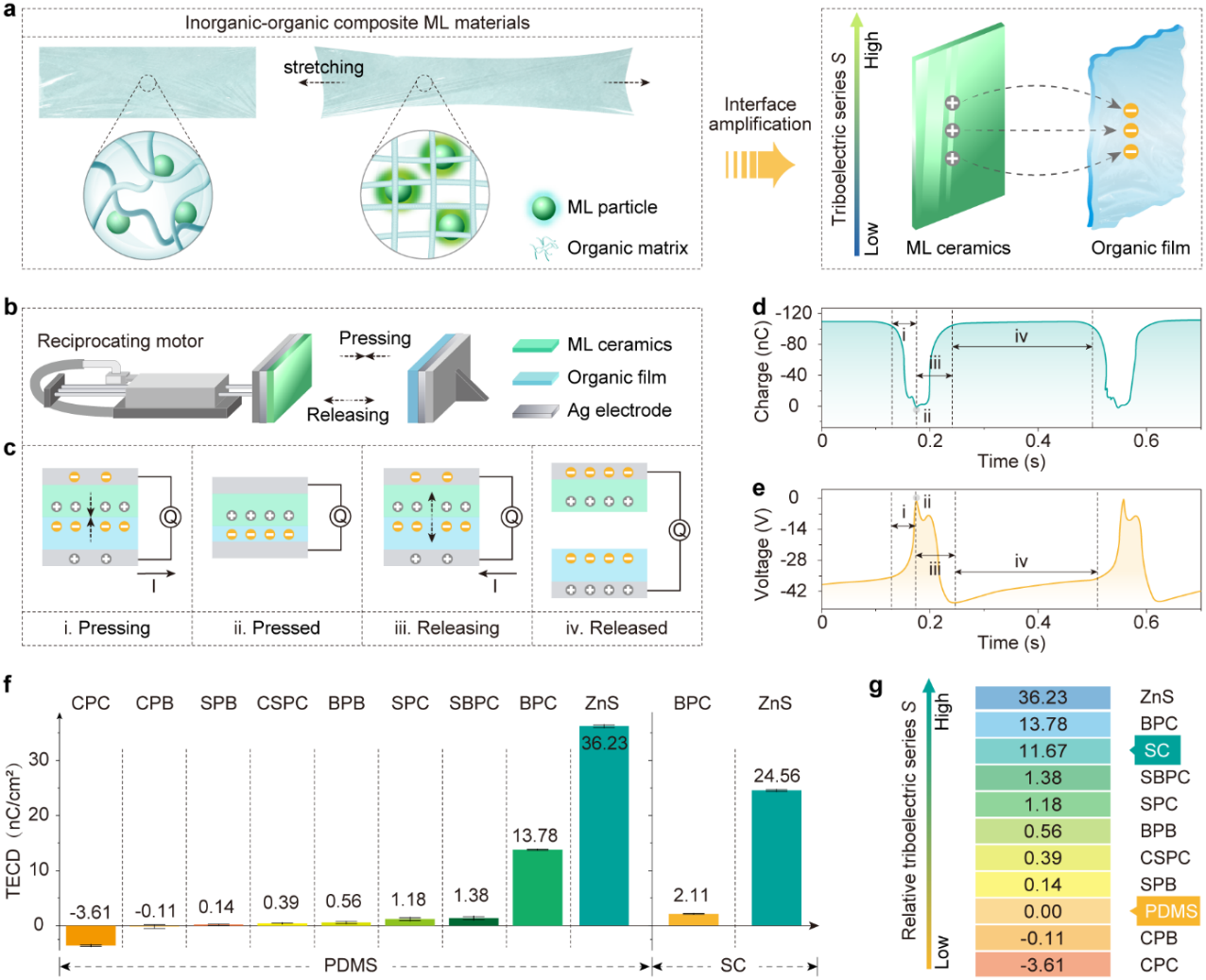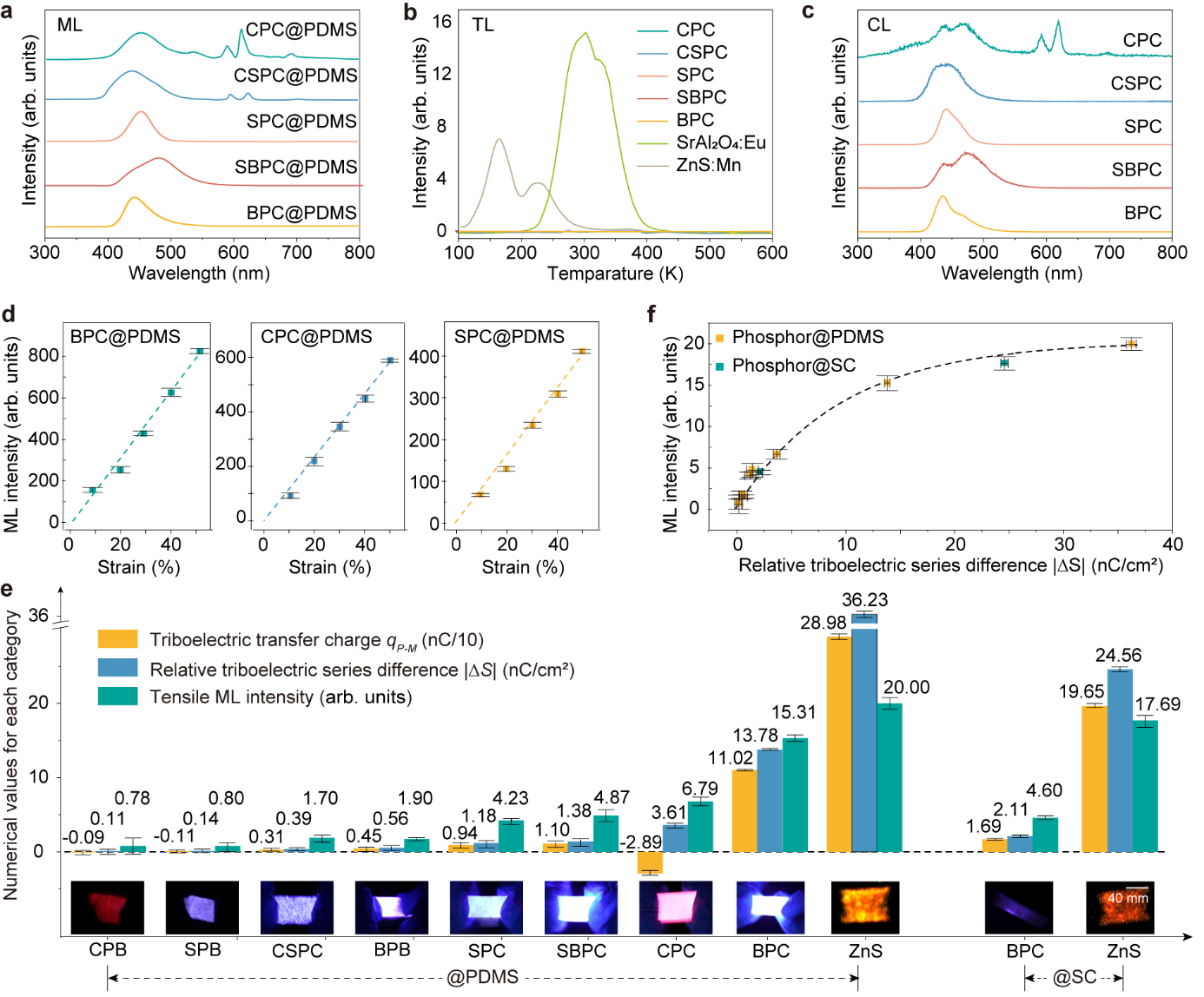🚀 Breakthrough in Mechanoluminescence: Enhancing Performance by 20x via Interfacial Triboelectricity! 🔬✨
Published in Chemistry, Materials, and Protocols & Methods

🌟 Revolutionizing Mechanoluminescence: 20× Enhancement via Interfacial Triboelectricity! ⚡💡
Nat. Commun. | Interfacial Triboelectric Effect in Inorganic@Organic Composite Mechanoluminescent Materials
🔬 Mechanoluminescence (ML) is paving the way for the next generation of smart sensors, self-powered displays, and wearable technology, thanks to its unique features: contactless mechanical response, stress visualization, self-powered luminescence, and high flexibility. ML-based sensing technologies have shown immense potential in structural health monitoring, electronic signatures, temperature sensing, biomechanical engineering, stress recording, and electronic skin applications.
However, a major challenge remains: self-recoverable ML materials, despite their stable emission, low activation threshold, and no need for pre-excitation, still suffer from unclear luminescence mechanisms and a lack of effective design strategies. These limitations hinder the development and application of high-performance ML materials.

💡 A breakthrough study, now published in Nature Communications, provides the missing link!
When inorganic@organic composite ML materials undergo mechanical deformation (compression/stretching), differences in elastic modulus between phases may cause interfacial detachment and lateral sliding, generating transient triboelectric charges. This effect offers a possible explanation for self-recoverable ML without optical pre-excitation or piezoelectric structures. However, due to the nanoscale nature of triboelectric interactions, direct measurement remains a challenge, and reliable experimental evidence has been lacking.
To address this, researchers developed a novel interface amplification strategy that translates the microscopic mechanical, interfacial electrical, and photonic emission processes into a macroscopically measurable system. By integrating a triboelectric nanogenerator (TENG) and optoelectronic coupling system, the study quantifies interfacial triboelectricity, revealing its crucial role in self-recoverable ML. The result? An astonishing 20-fold increase in ML intensity in the studied material system!

🚀 This study not only provides the first strong experimental evidence of self-recoverable ML mechanisms but also opens new pathways for designing high-performance ML materials and self-powered luminescent technologies.
🔍 Key Research Highlights
✔️ First-ever quantification of the relative triboelectric series in inorganic@organic ML materials, confirming that interfacial triboelectricity is the key factor governing self-recoverable ML.
✔️ Correlation between triboelectric charge transfer and ML intensity—proper inorganic-organic combinations can boost ML intensity by 20×.
✔️ Demonstration of Eu²⁺/Eu³⁺ self-oxidation and self-reduction under continuous mechanical stimulation, providing direct experimental proof of electron transfer-driven luminescence recovery.
✔️ Extension of triboelectric regulation to multi-interface systems, including ML particle-matrix and force-matrix interfaces, demonstrating a clear strategy for enhancing ML intensity in practical applications.

📖 Read the Full Study in Nature Communications
📄 Title: Quantifying the interfacial triboelectricity in inorganic-organic composite mechanoluminescent materials
📖 Journal: Nature Communications
👨🔬 Authors: Pan Xin, Yixi Zhuang, Wei He, et al.
🔍 DOI: 10.1038/s41467-024-46900-w
💡 This research unlocks new opportunities for ML-based sensing, self-powered displays, and biomechanical applications. We invite researchers worldwide to read, discuss, and cite our findings as we explore the exciting frontiers of ML technology! 🌍🔬✨
#Mechanoluminescence #TriboelectricEffect #AdvancedMaterials #SmartSensors #NatureCommunications
Follow the Topic
-
Nature Communications

An open access, multidisciplinary journal dedicated to publishing high-quality research in all areas of the biological, health, physical, chemical and Earth sciences.
Related Collections
With Collections, you can get published faster and increase your visibility.
Women's Health
Publishing Model: Hybrid
Deadline: Ongoing
Advances in neurodegenerative diseases
Publishing Model: Hybrid
Deadline: Dec 24, 2025


Please sign in or register for FREE
If you are a registered user on Research Communities by Springer Nature, please sign in